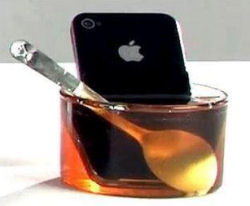 With all the discussion about what is happening in the Middle East, and all the discussions about Israel and Palestine, I thought I should make some things clear:
With all the discussion about what is happening in the Middle East, and all the discussions about Israel and Palestine, I thought I should make some things clear:
- I unequivocally support Israeli’s right to exist as a nation, and as a space where Judaism can be practiced safely. The land where Israel is located is the traditional homeland, going back to biblical days. We can quibble on the exact borders, but the current borders — which exclude Gaza and portions of the West Bank, are as reasonable as any.
- Many — but not all — of the Arab and Palestinian groups that are involved in these battles have as a fundamental tenet that Israel does not have the right to exist. At all. A Hamas member stated today, “Israel is a country that has no place in our land. We must remove that country because it constitutes a security, military and political catastrophe to the Arab and Islamic nation and must be finished.” You can not negotiate with organizations and nations from a position where they deny your right to exist. Simple as that. Were they to recognize Israel’s right to exist in some form, a solution can be achieved. While they refuse to do so, a solution is not possible. Note that Israel has recognized the right for some form of Palestinian nation to exist, by ceding the land of Gaza and portions of the West Bank. Note that other Arab nations have not provided land for the Palestinians, even though the land was part of the same British mandate.
- Hamas is behaving much like ISIS did on 9/11: They specifically attacked civilians to create terror, and have specifically located their facilities in civilian areas because of the PR benefit they gain when their military facilities are attacked and civilians are harmed. Hamas has specifically made the decision to put their population in danger. Israel’s war is with Hamas, not the civilian population. Hamas has made it nearly impossible, however, to root out the terrorists without collateral damage.
- That said: Support for Israel does not mean I always agree with the actions of the Israeli government. Judaism is not the same as Zionism; support for the nation of Israel is not the same as supporting their government. I love and support America; I despise Donald Trump (especially when he was President). I do not agree with all the actions taken by Netanyahu, although I do agree that Israel has the right to go against Hamas, just as America went against ISIS.
- Israel has not always treated its Arab population well. It didn’t treat the established population of Gaza and the West Bank well when it governed those lands. That fact cannot be changed, just as America has no excuse for its abuses in the areas of slavery, or in the abuses of the internment camps, or in any other form of racism that has occurred. That can only be corrected moving forward (and is unlikely to be corrected under Netanyahu, alas); and will only be corrected once said population is not trying to wipe Israel off the map. That really is the fundamental problem.
- There is no excuse for antisemitism. Period. End of story. In particular, Jews throughout the world are not the individuals who have governed the Palestinian areas. That treatment is not what Judaism believes in. Dislike or even hate the current and past Israeli governments if you feel that way, but do not take it out on Jews throughout the world. The same is true, by the way, for anti-Muslim hate. Hate Hamas and these terrorist organizations. Do not hate the Palestinians or Muslims, who outside of those organizations are peaceful and kind people.
Let us all hope for the day, when each side recognizes the other’s right to exist in the Middle East, and we can work to negotiate a settlement based on that recognition, and the fact that beneath it all, we are all monotheistic siblings with a shared basis.



 Rosh Hashanah, the Jewish New Year, starts at sundown Friday night, September 15th. Thus, it’s time for my annual New Years message for my family, my real-life, Blog, Facebook, Universeodon, Dreamwidth, Tumblr, Twitter/X, and AARoads friends (including all the new ones I have made this year), and all other readers of my journal:
Rosh Hashanah, the Jewish New Year, starts at sundown Friday night, September 15th. Thus, it’s time for my annual New Years message for my family, my real-life, Blog, Facebook, Universeodon, Dreamwidth, Tumblr, Twitter/X, and AARoads friends (including all the new ones I have made this year), and all other readers of my journal: Another traditional food is a
Another traditional food is a  Sunday evening, I had the honor and privilege to organize, and essentially lead,
Sunday evening, I had the honor and privilege to organize, and essentially lead,